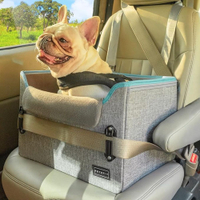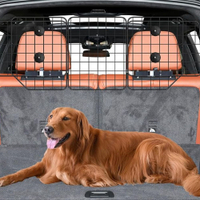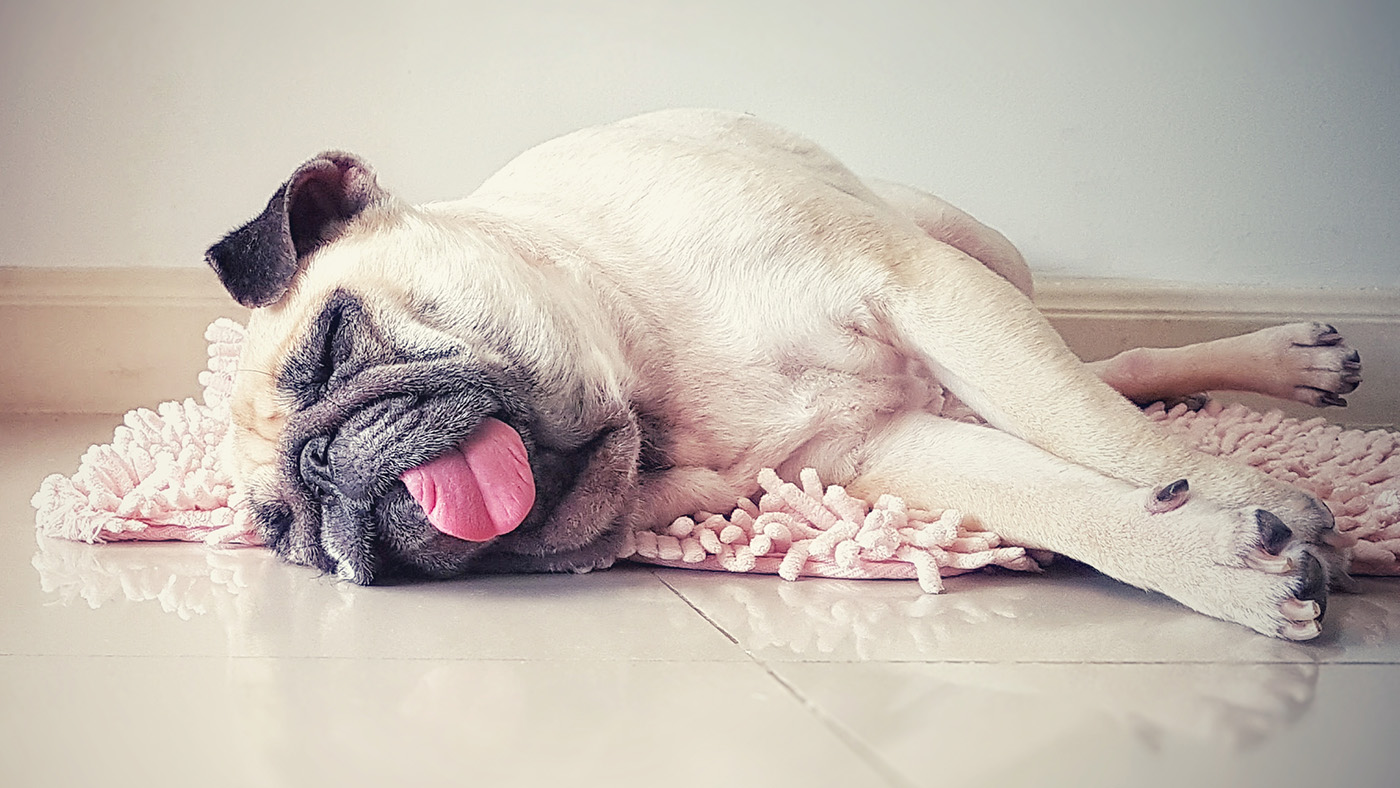How to secure a dog in a car safely for all
We talk you through how to secure a dog in a car and give you some helpful tips to help you and your canine companion to travel safely
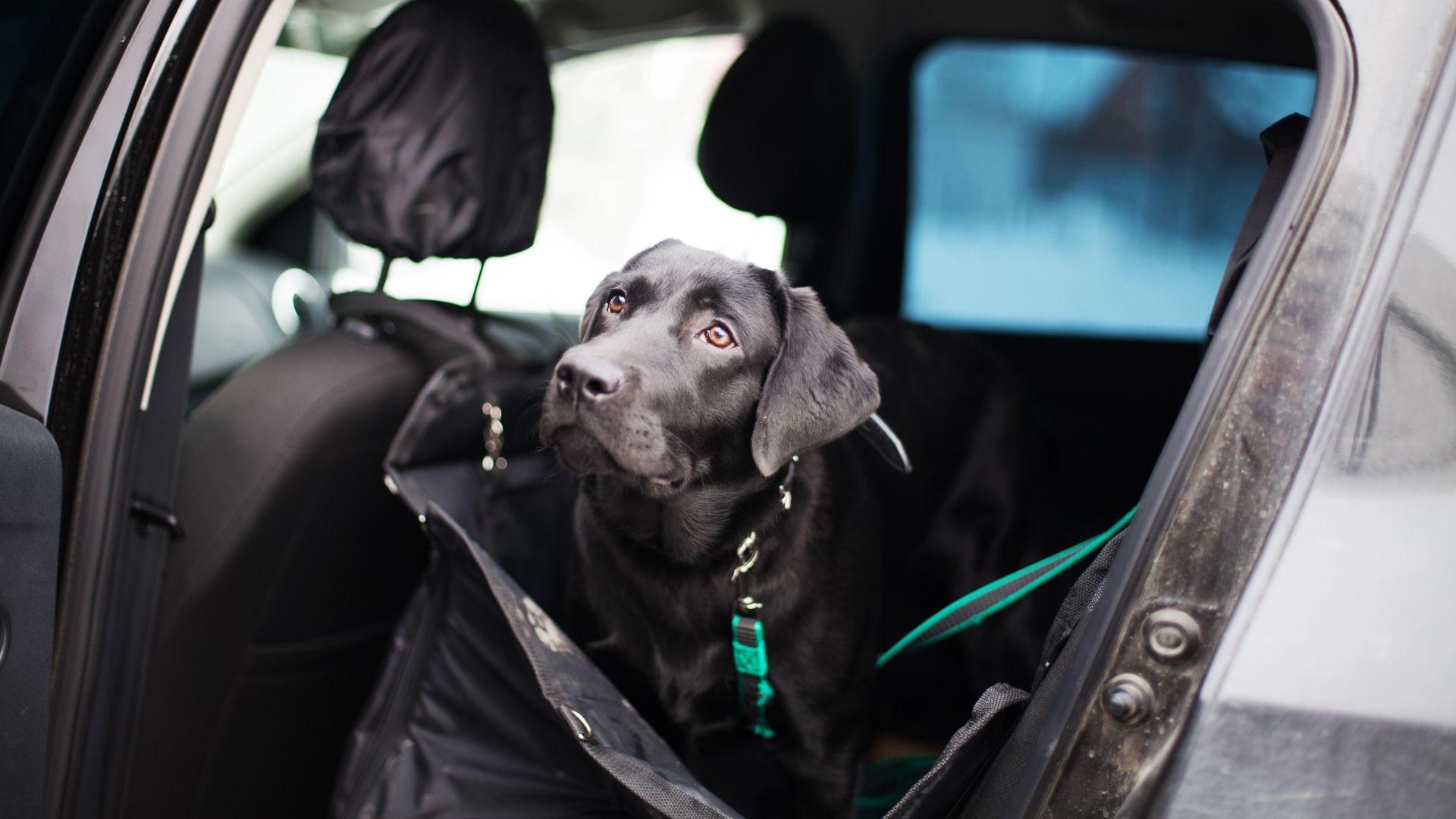
How to secure a dog in a car in a way that’s safe for both them and the driver is a common concern amongst pet parents, so if you’ve found yourself pondering that question, rest assured, you’re far from alone.
If you’re anything like we are, then chances are you love traveling with your dog wherever you go, but you may be wondering how to transport them from A to B in a way that keeps them secure.
You’ve probably seen people driving with their dog’s sitting in the front passenger seat or worse still, their lap, and seeing dogs hanging out of car windows is a pretty regular sight these days. But while these things may look cute, driving without restraining your dog can be incredibly dangerous.
Adorable as they are, our dogs can be a major source of distraction when we’re on the road if they’re not secured and if an accident occurs, a loose dog could be injured or worse still, cause a great deal of injury to you if they’re projected forward.
The good news is, there’s absolutely no reason why your dog can’t accompany you in the car as long as they’re secured safely. From choosing the best dog harness (and getting the hang of how to put a dog harness on) to the best travel dog crate, we talk you through how to secure a dog in a car in the car and give a few safety tips for driving with your dog.
Why is securing your dog in the car so important?
From a safety and legal standpoint, securing your dog is completely non-negotiable.
“If a dog is not adequately restrained when traveling in a vehicle then significant issues could occur,” says companion animal vet Dr Rebecca MacMillan. “If you had an accident or had to brake suddenly, your dog could be flung forward in the car. This could result in serious injury to you if your dog flies into the back of your head. However, it could also cause trauma to your dog, as they could be thrown through the windscreen.”
An unstrained dog could also make keeping your eyes on the road more difficult.
“A loose dog is also a major distraction while driving,” continues Dr MacMillan. “If they are climbing over the seats or onto your lap, then your eyes could be drawn away from the road. This could cause a road traffic accident and leave you facing a dangerous driving charge in some cases. In many countries, and a few US states, it is an offense not to have your dog suitably restrained.“
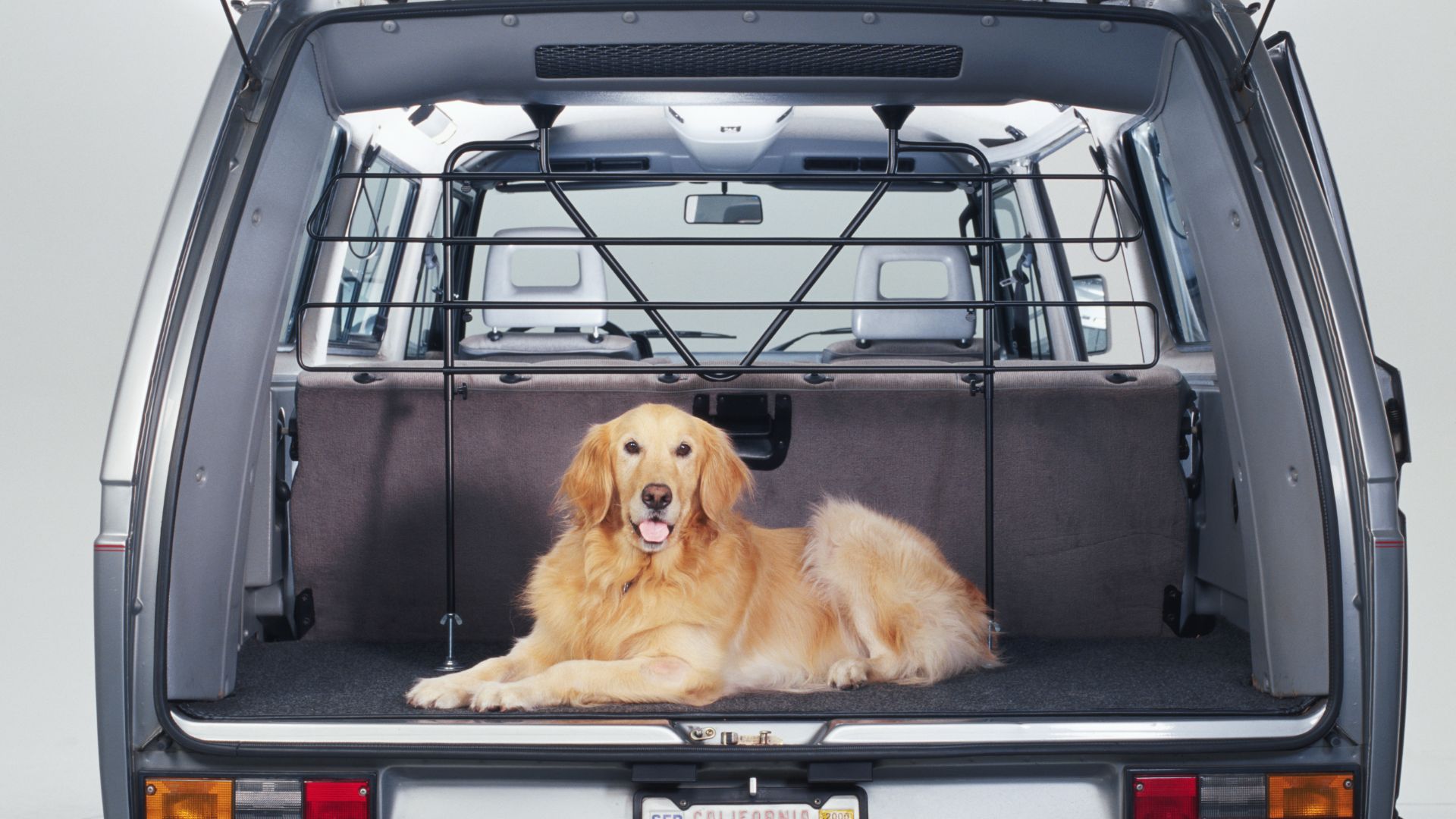
How to secure your dog in a car
“You can secure a dog in a few different ways,” says Dr MacMillan. “Keeping your dog in the boot in a dog crate is one option, or installing a dog guard is another. Alternatively, you could buy a seat belt harness if you prefer your dog to travel in the back seat of your car.
“By restraining your pet, you will be keeping yourself and other road users safe, as well as your dog.”
Here’s an in-depth inquiry into all the ways you can secure your dog in a car...
1. Crate your pup
Investing in one of the best dog travel crates is ideal if your dog accompanies you in the car on a regular basis and they’re especially good for longer trips. Crates are sturdy and when they’re secured into place properly, they can be one of the safest ways for your dog to travel.
You’ll want to make sure you choose the right size crate for your dog and your car, ensuring that your pup has plenty of room to stand up and turn around in but not so much space that they’ll be sliding about. Look for strong straps or a crate that can have the seat belt fitted to it as if you have an accident, you don’t want the crate launching forward in your direction.
We recommend you make the crate a cozy place for your dog if you’re traveling for longer periods, so consider popping in a blanket and some toys to make it feel more comfortable for them. If your dog is a nervous traveler, you might also like to cover the crate with a blanket to help them feel more secure.
Petmate Two-Door Dog and Cat Kennel | Amazon
This pet travel crate is ideal for toy dog breeds and has a top door for easy access.
2. Use a harness
The best dog harnesses are another great option for keeping your furry friend restrained while on the go but make sure you look for one that’s been specifically designed for use in the car as these have a strap that plugs into the seat belt. We’ve rounded these up separately in our guide to the best car harnesses for dogs.
When selecting a harness for use in the car, look for one that has wide straps and plenty of padding across the chest as this will lessen the chance that your dog will sustain an injury in the event of a crash.
To secure your dog using a harness, take the zipline and hook it into the rear passenger seat-belt tab and seat belt and then tug each seat belt to ensure they’re locked into the correct position. Once you’ve done that, remove all the slack from the zipline as this will prevent your dog from being thrown forward.
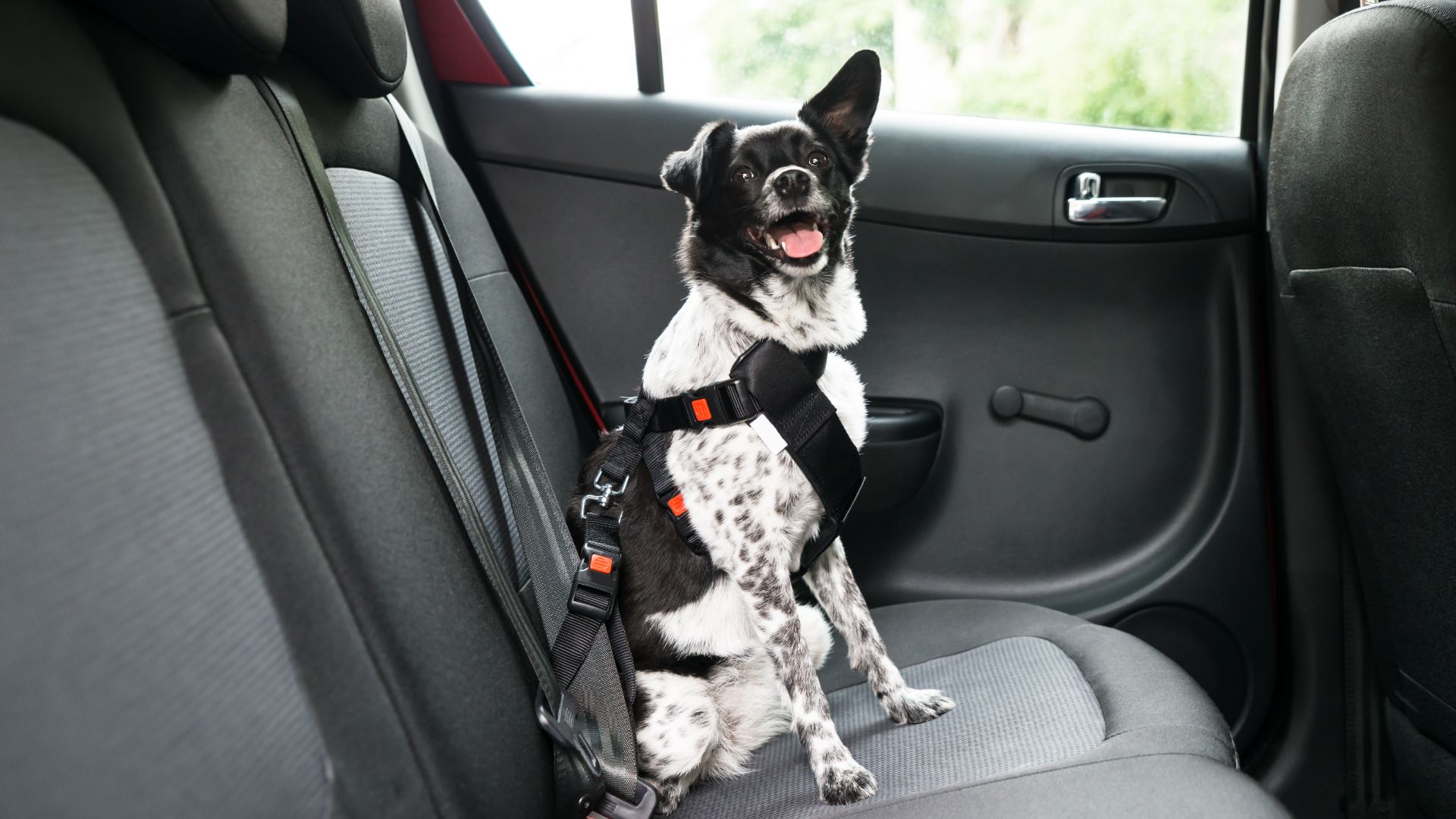
Lukovee Dog Safety Vest Harness With Seatbelt | Amazon
Winner of our best harness overall, this harness is wide webbed and made from chew-proof nylon for comfort and durability.
3. Car seat
If you have a tea cup or small breed dog, then you might want to consider a car seat, often called a booster seat. Just like the name suggests, these seats are designed to boost your dog up and will allow them to see out the window while you’re traveling.
Most car or booster seats come with a seat belt that you can then clip your dog’s harness into. Make sure you never attach the seat belt to your dog’s collar as this could strangle them in an accident.
Booster seats are best suited to very calm and well-behaved dogs who’ll happily sit in a confined space – we don’t recommend them for anxious or energetic dogs who have a problem sitting still.
Petsfit Portable Dog Booster Car Seat | Amazon
This dog car seat can be fastened in with your car’s seatbelt and is suitable for dogs up to 25lbs.
4. Install a back seat barrier
As you’ve probably guessed, a back seat barrier is designed to block off the section of the car between the driver and front passenger area of the car and the rear passenger area. You may also have seen car barriers being used in the cargo area of SUVs.
Using a back seat barrier will stop your dog from trying to clamber into the front while you’re driving, so they’re a great way of minimizing distractions. We recommend that you choose a guard that bolts to the floor and roof of your car so it can’t be knocked out of position. While barriers aren’t as good as keeping your dog safe as a harness or crate, they’re certainly better than nothing.
Casimr Dog Car Barrier | Amazon
This universal-fit barrier is sturdy, secure and scratch-proof.
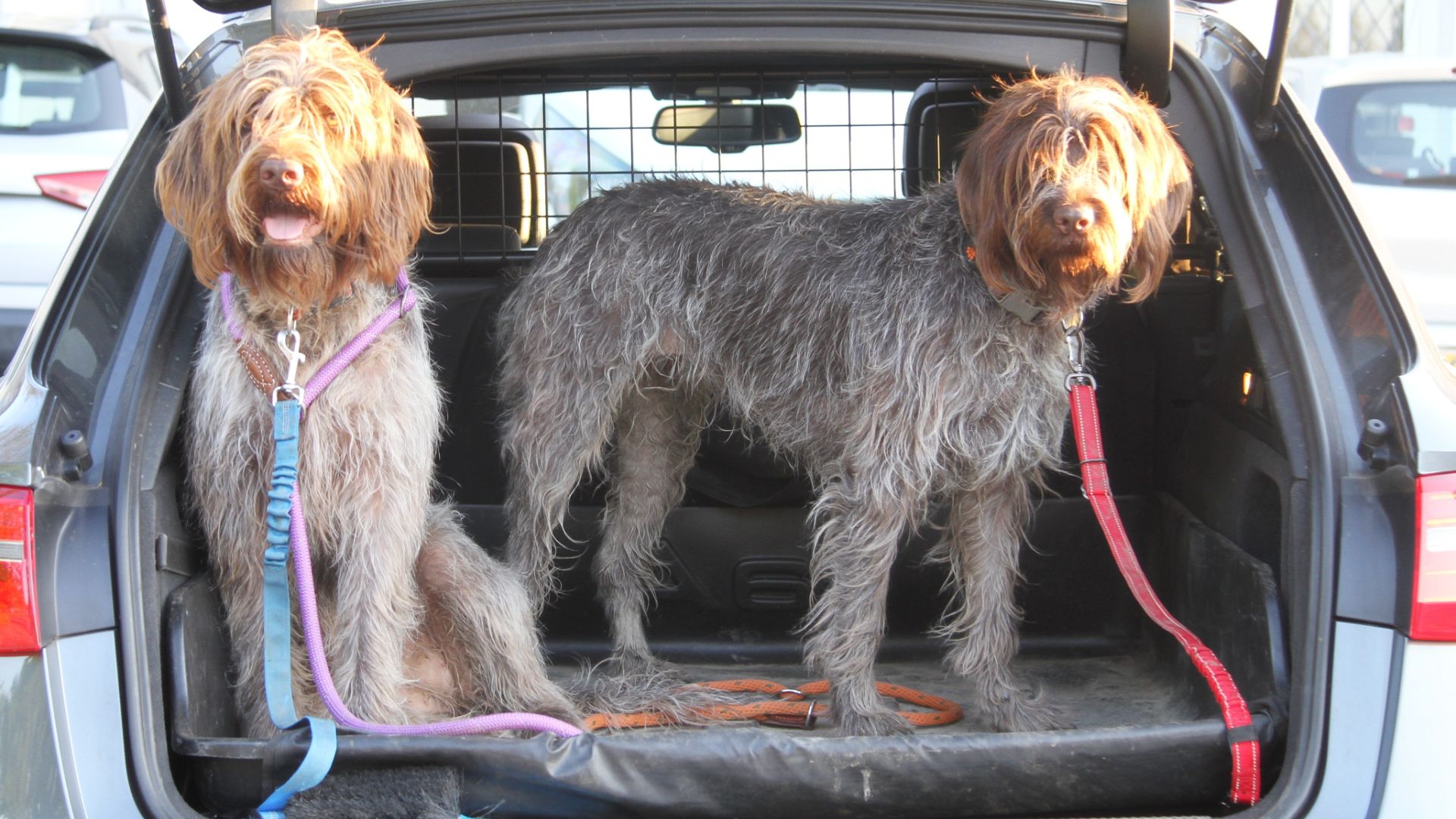
5. Dog hammock
Dog hammocks are another option that have become popular in recent years and they’re particularly good for senior dogs as this lets them lie down in the car. Lying down can also help any dog who suffers from motion sickness and they also protect your upholstery from all that fur!
The best way to use a dog hammock is with a seat belt as this will stop your dog from falling off the hammock and will also prevent them from trying to climb into the front of the car while you’re driving.
K&H Pet Products Buckle N' Go Dog Hammock | Amazon
This hammock is easy to fit and includes a seatbelt attachment.
Feeling ready for an adventure? Here are our tips for road-tripping with your dog.

Dr MacMillan is a companion animal vet who has always had a passion for writing and client communication. She works in the South West and loves complex medical cases.

Bethany is an experienced writer who has been writing across the pets and equestrian sector for eight years.
PetsRadar Newsletter
Get the best advice, tips and top tech for your beloved Pets

Kathryn is a freelance writer who has been a member of the PetsRadar family since it launched in 2020. Highly experienced in her field, she's driven by a desire to provide pet parents with accurate, timely, and informative content that enables them to provide their fur friends with everything they need to thrive. Kathryn works closely with vets and trainers to ensure all articles offer the most up-to-date information across a range of pet-related fields, from insights into health and behavior issues to tips on products and training. When she’s not busy crafting the perfect sentence for her features, buying guides and news pieces, she can be found hanging out with her family (which includes one super sassy cat), drinking copious amounts of Jasmine tea and reading all the books.
- Dr Rebecca MacMillanVet
- Bethany StoneFreelance Writer


